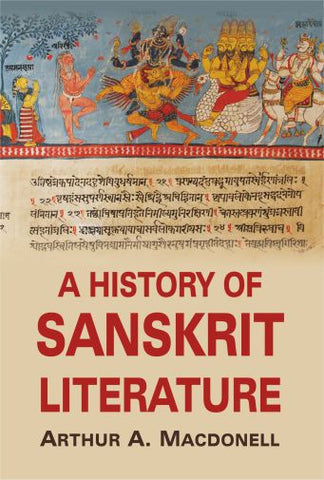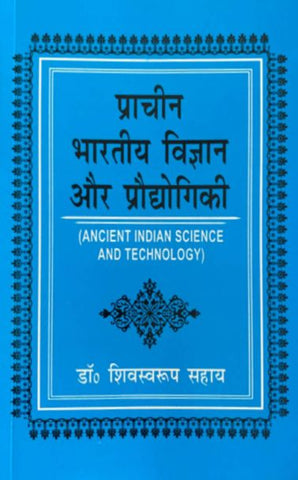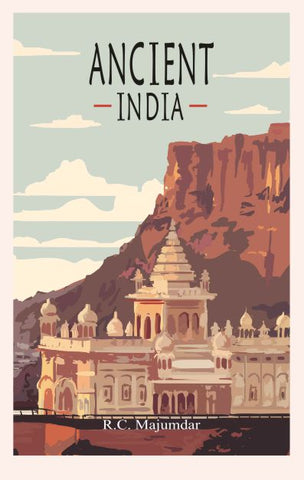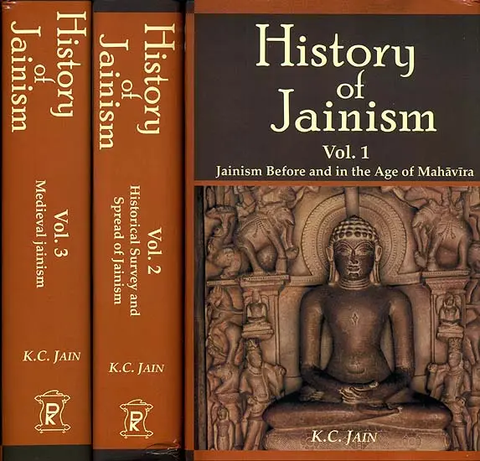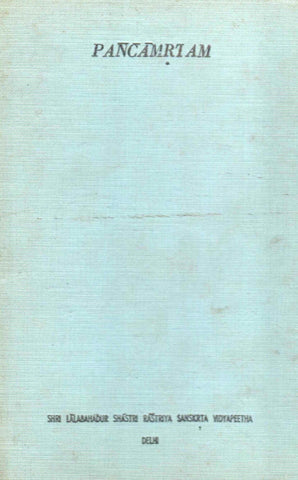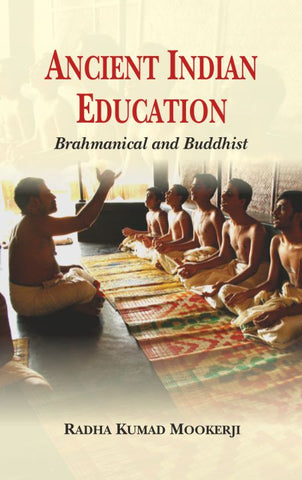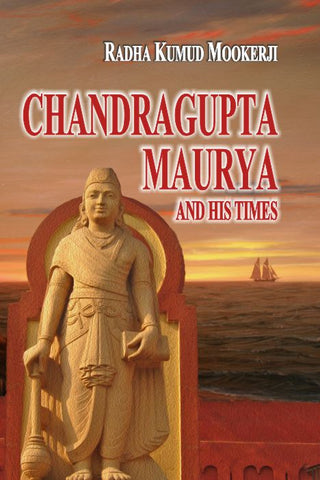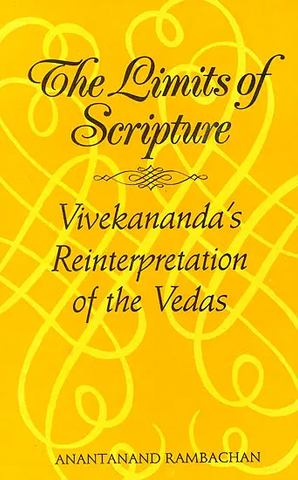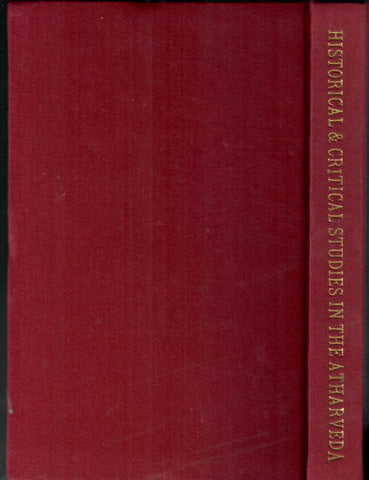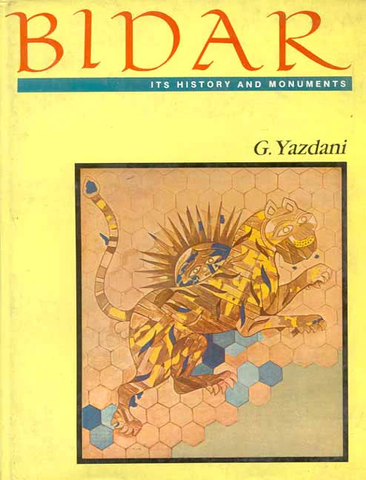Your cart is empty now.
Vedas aren’t just the scriptural texts, but the earliest record of Indo-Aryan civilisation. On the basis of this corpus of mankind’s oldest literature, together with his indepth analyses of the later-day. Puranic writings, Professor Bhargava offers the first ever systematic, well-knit study of the Aryan expansion on the Indian subcontinent since c. 3100 BC. Retrieving, thus, hard historical facts from the complex Sanskrit verses of ancient seers, Dr. Bhargava’s book opens a fascinating, panorama of life in Vedic India — highlighting, in particular, its powerful dynastic families, its rsis, society, economic conditions, political setup, religion, philosophy and literature. The book also includes a vivid description of the Aryan homeland, its geography, flora, fauna, and a lot else.
Now in its third enlarged, fully revised and updated edition, India in the Vedic Age has, ever since its first appearance in 1956, been acclaimed not only by prestigious journals or discerning readers, but also by many Indologists/Sanskritists/historians of worldwide eminence, including notably, A.L. Basham, K.D. Vajpeyi, Ludwik Sternbach, T.G. Mainkar, and C.’V. Devas. While A.S. Altekar acknowledged it as “a distinct advance over Pargiter’s work”, Dr. Bhargava’s book is certainly, as U.N. Ghoshal observed, “the most original work of our time”.
Purushottam Lal Bhargava is a Sanskritist, historian and Indologist of international renown. And a leading authority on religion as well. During the pre-retirement years of his academic career, Professor Bhargava headed the Department of Sanskrit at Rajasthan University, Jaipur, and also sewed a two-year term at McMaster University, Ontario, Canada, as Visiting Professor of Religion. His published work includes several well-received books, like Chandragupta Maurya, Retrieval of History from Purainic Myths, and Fundamentals of Hinduism.
Dr. Bhargava, the versatile scholar, is recipient of numerous awards/honours, including the coveted “Distinction in Sanskrit” (in 1995) from the President of Indian Republic. Now 91, this former Professor is not only working on two fresh titles: the Bhagavad Gita and the Ramayana, but even lectures at international conferences.
The second edition of this book was published in 1971. This edition, like the first edition, was sold out in a very short time. Since then there has been constant pressure on me for a new edition of this book. But as before, I was busy in writing my other books and getting them published. At long last, I decided to get the third edition of this book published. In revising this book for a new edition, I was helped in every way by my daughters Mira and Shobhana, my son Divakar and my grandson Manjul. I am sincerely thankful to them for this help and publishing the book. The book is now in the hands of the readers and I hope they will enjoy it and benefit from it.
The first edition of this book was sold out within a few months of its publication, and, although there has been a persistent demand for it, I did not like it to be sent to press for a second edition without a thorough revision. Unfortunately I could not find time for this work for a number of years, but finding the pressure from the publishers of the book and the readers irresistible, I took up the task of revising and enlarging the book in order to make it comprehensive and up to date. I have added three new chapters and thoroughly revised the others. It is now in the hands of readers.
It is a matter of regret that a number of errors and typographical blemishes, justly open to censure, have crept unnoticed even in this new edition. Since the system of transIiteration of Sanskrit words into Roman script was different in the first edition, many words which needed rewriting according to the new system have remained unchanged through oversight. Mistakes of other type are also not a few.
I am thankful to my brother Mr. Sarvottam Bhargava for help in getting this book printed. I am also thankful to my pupils Dr. Ram Datt Sharma and Mr. Basant Jaitly and my son-in-law Dr. V.P. Muralidharan for assisting me in the arduous task of preparing the index.
When I studied the hymns of the Rgveda for the first time I was deeply impressed by the optimistic outlook of our ancestors whose civilization is embalmed in this great book. This aroused a yearning in my heart to learn the history of the Rgvedic people.
The Aryas as they called themselves — and I began a study of the literature pertaining to the subject. From this study I learnt much about the religious beliefs and the social customs of the Aryan people. But on the political history of Aryas I could get very little information. The reasons were patent. The 1?gveda and the subsequent Vedic literature being primarily religious, whatever historical allusions are found therein are only incidental. No history can be constructed on the basis of these allusions alone. The only works professing to deal with the history of the Aryan people are the Purãnas and the impression has gained ground that they are very late, full of mythology, and absolutely irreconcilable with the Vedic literature. This all but damped my spirits. I turned to the Puranas not with the hope of getting anything useful out of them but just to satisfy my curiosity. But after a patient study of these works I came to the conclusion that their tradition does not really go against the Vedic evidence and that they do contain some genuine matter pertaining to Vedic times, though it is thickly coated with mytholgoy.
The results of my studies are embodied in this work. I express my gratitude to all the authors, ancient and modern, whose works have been of help to me. In this connection the name of the late Mr. F.E. Pargiter deserves special mention, because his book Ancient Indian Historical Tradition, though suffering from the fault of being one-sided, belittling as it does, the evidence supplied by the Vedic literature, is yet a pioneer work in the field of Puranic studies and I have profited by it. Among Vedic scholars I must mention the names of Professors A.A. Macdonell and A.B. Keith whose monumental works have been of great help to me as they have been to every other student of the Vedic lore.
This work was presented as a thesis to the Agra University which awarded me the degree of Doctor of Philosophy on it. I am grateful to Dr. Rama Shankar Tripathi, University Professor of History and Principal Central Hindu College, Banaras Hindu University, for guiding me through this work. Unfortunately a few errors and typographical blemishes have crept into the finally printed pages.
In the end I express my deep gratitude to the Rajputana University for giving me a generous grant of Rs. 1500 towards the cost of publishing this book.
| Preface to the Third edition | v | |
| Preface to the Second edition | vii | |
| Preface to the First Edition | ix | |
| Abbreviations | xiii | |
| Transliteration System | xiv | |
| Map of India in the time of King Sudãs | ||
| 1. | Introduction | 1 |
| 2. | Examination of Sources | 7 |
| 3. | General Survey of Aryan Expansion | 47 |
| 4. | Geography, Fauna, and Flora of the Vedic Homeland | 71 |
| 5. | The Purãnic Genealogies | 109 |
| 6. | Agreement of Vedic and Purãnic Traditions | 153 |
| 7. | Evidence of Synchronisms | 179 |
| 8. | Eras of the Vedic Age | 191 |
| 9. | The Families of Vedic Rsis | 199 |
| 10. | Chronology of the Vedic Age | 231 |
| 11. | History of the Vedic Age | 249 |
| 12. | Social and Economic Conditions | 279 |
| 13. | Political and Legal Institutions | 303 |
| 14. | Religion and Philosophy of the Vedas | 315 |
| 15. | Language and Literature | 391 |
| Bibliography | 423 | |
| Index | 433 |

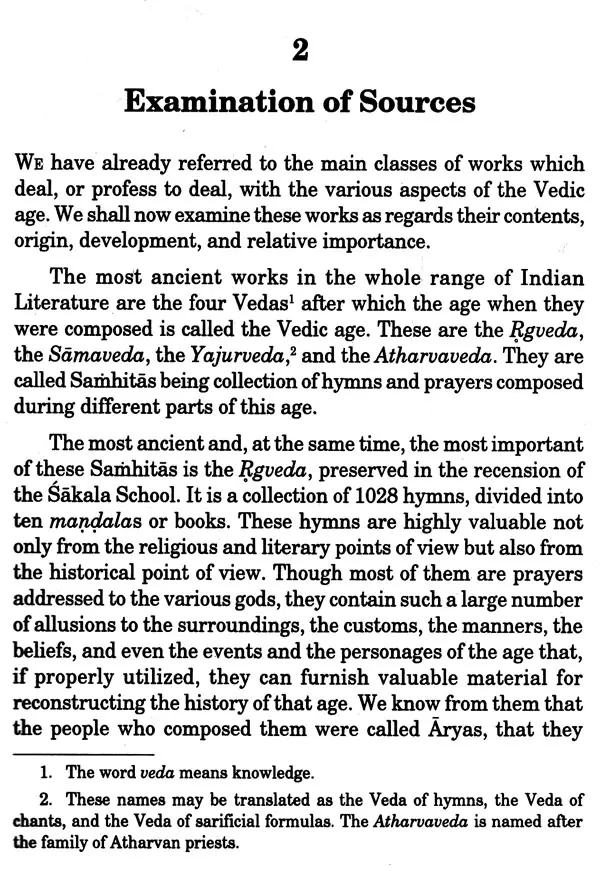

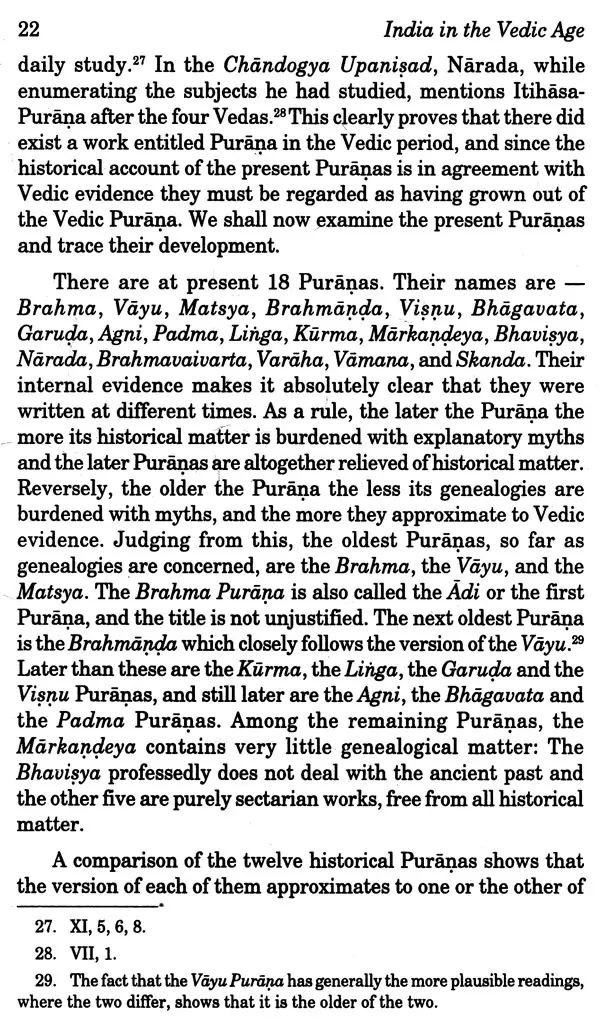
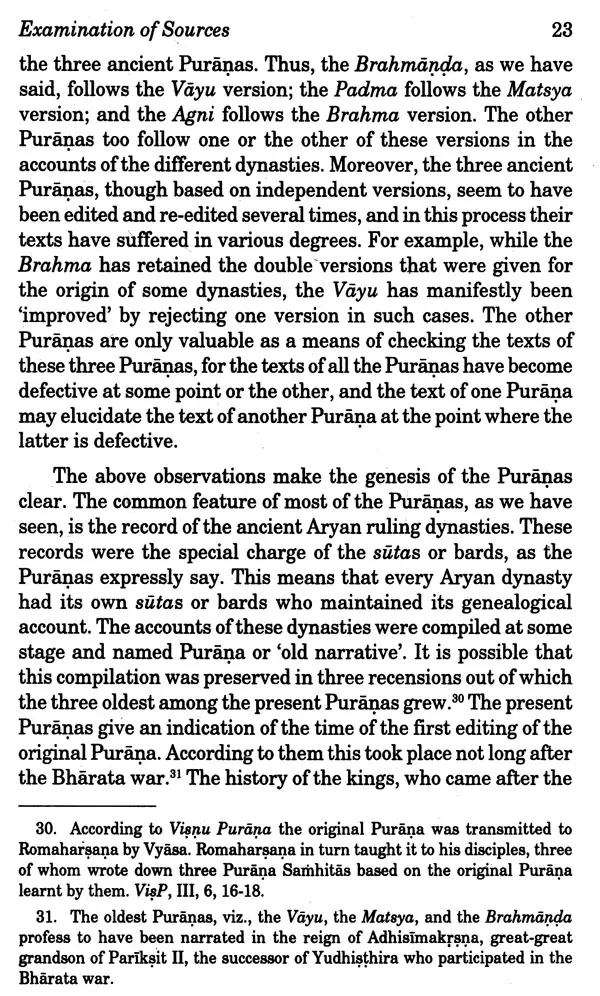
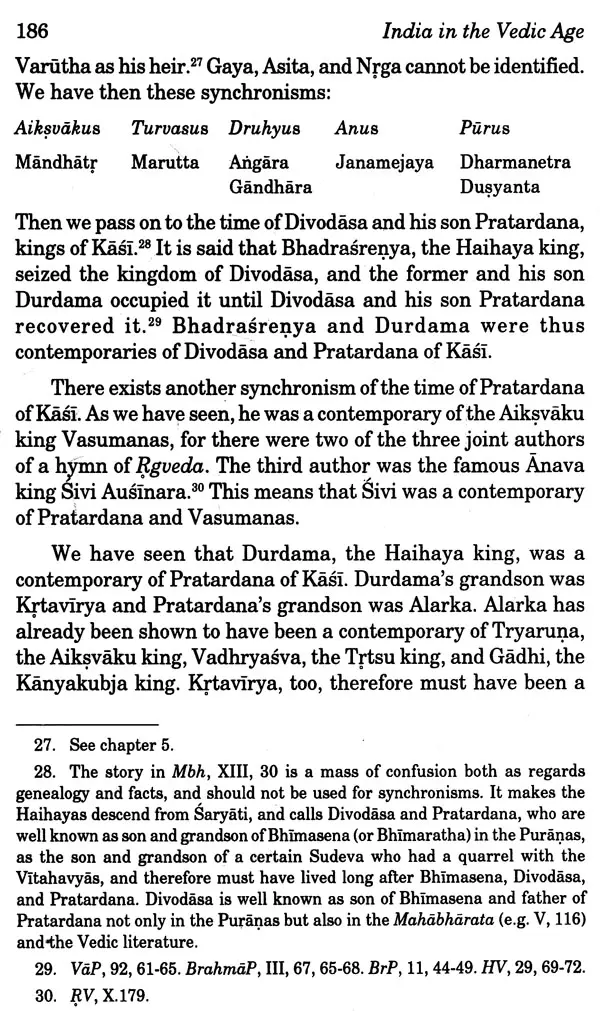
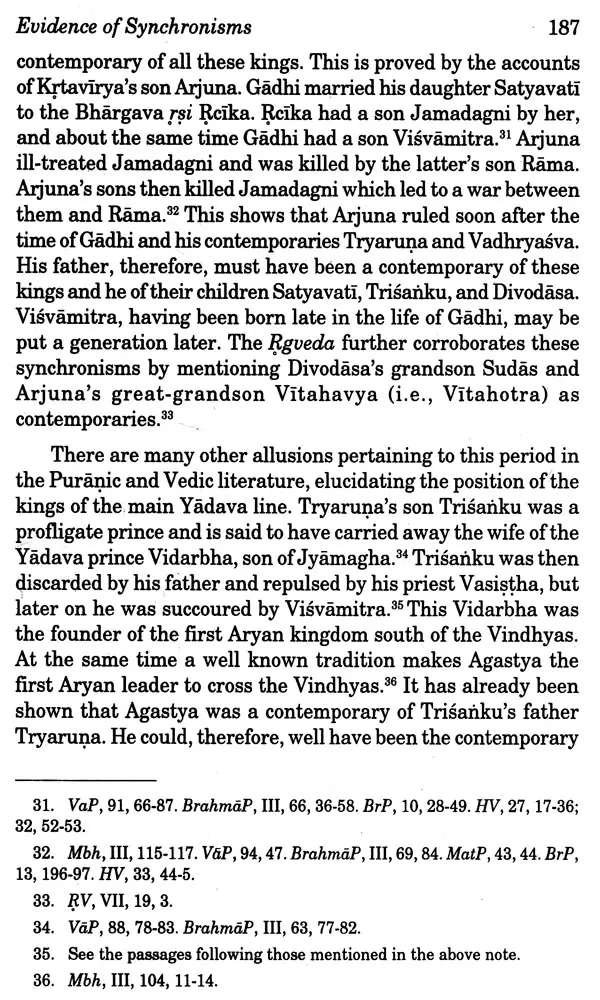


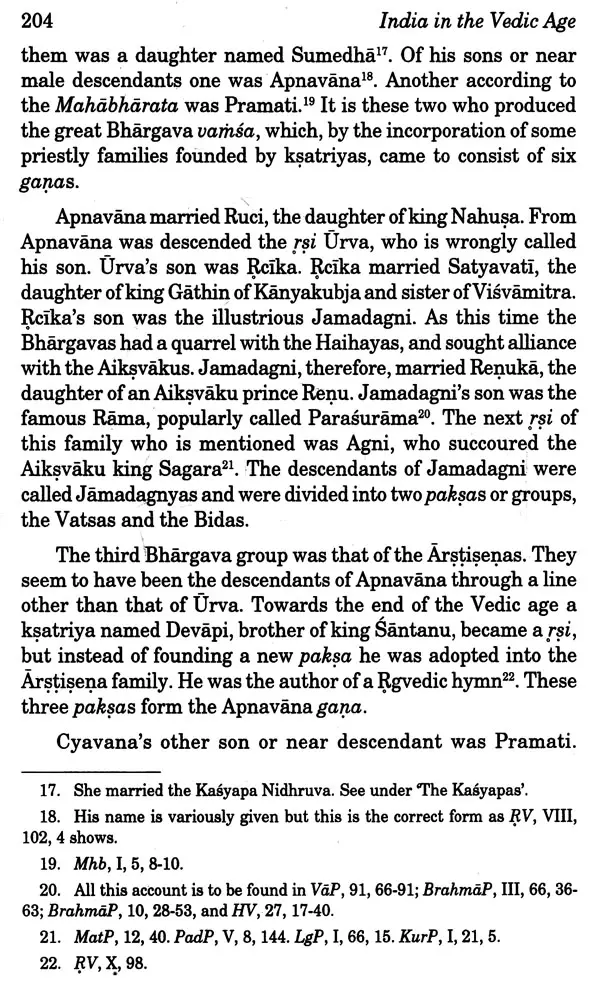
Delivery and Shipping Policy
- INTERNATIONAL SHIPPING
- Rs.1000-1100/kg
- ESTD. Delivery Time: 2-3 weeks (depending on location)
- Bubble Wrapped with Extra Padding
- NATIONAL SHIPPING
- NCR: Rs. 30/half kg
- Standard: Rs. 80/half kg
- Express shipments also available on Request
- ESTD. Delivery Time: Ranging from 1-4 days up to 7 business days (Depending on your choice of Delivery)
- TRACKING
- All orders; national or international, will be provided with a Tracking ID to check the status of their respective orders
- Depending on the Shipping Service, Tracking ID may be used on their respective tracking portals
Frequently Asked Questions (FAQs)
Domestic Shipping: 3-4 Days (after shipping)
International Shipping: 1-2 weeks (based on your location)
You will receive an email once your order has been shipped or you can email us if you didn't receive tracking details (info@mlbd.co.in)
Every book that we sell is the latest edition except all the rare books
Yes, we do provide free shipping, only on domestic orders (within India) above Rs.1500









